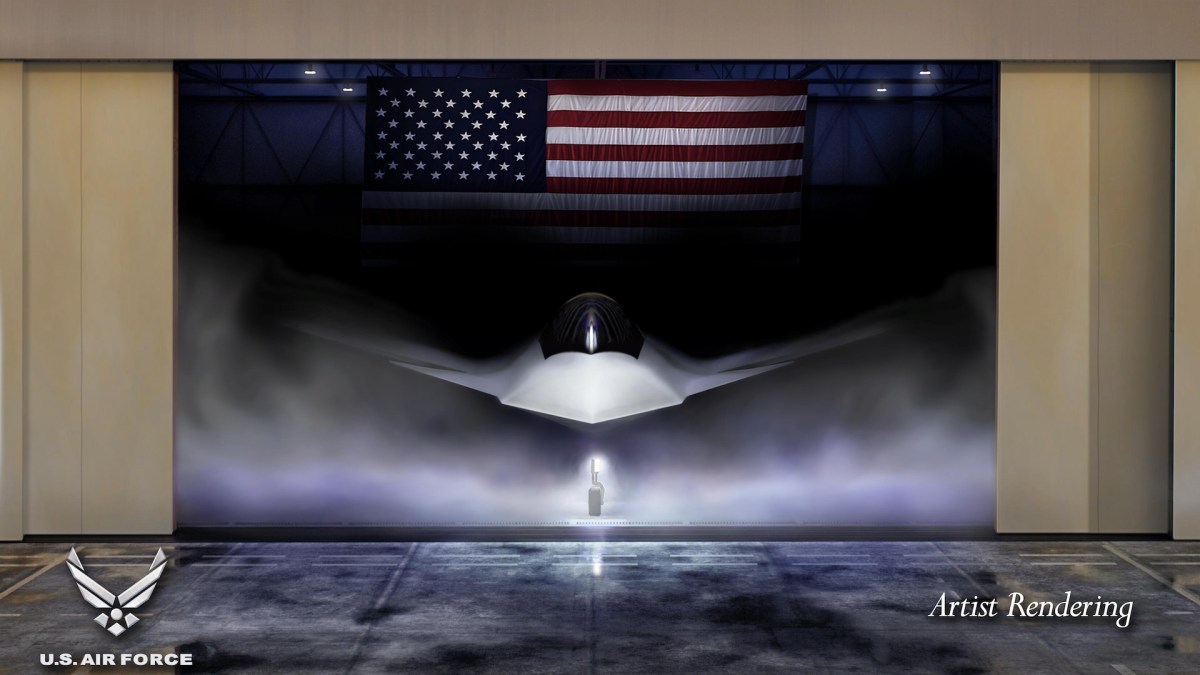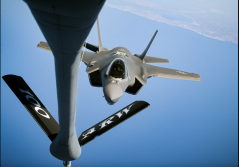Pentagon budget goes ‘all in’ on Air Force’s F-47, putting Navy’s sixth-gen fighter on hold

The Trump administration is prioritizing major investments in fiscal 2026 for the Air Force’s next-generation fighter jet known as the F-47, while simultaneously deciding to put the Navy’s future tactical aircraft program on the back burner — for now.
The Air Force is requesting nearly $3.5 billion in FY’26 to continue work on the F-47, a sixth-generation fighter under development by prime contractor Boeing. According to budget documents released Thursday, the allocation includes $2.6 billion in discretionary funds and $900 million from the GOP-led reconciliation bill currently under debate in Congress.
In contrast, the Navy’s sixth-gen fighter program known as the F/A-XX, would receive just $74 million in R&D funds — 84 percent less than the $454 million the service received in fiscal 2025. The decision comes after the Navy already delayed around $1 billion for F/A-XX in FY’25 due to spending caps imposed by the 2023 Fiscal Responsibility Act.
“We did make a strategic decision to go all-in on F-47,” a senior defense official told reporters during a Pentagon briefing Thursday. The move was prompted “due to our belief that the industrial base can only handle going fast on one program at this time, and the presidential priority to go all-in on F-47 and get that program right, while maintaining the option for F/A-XX in the future,” they added.
President Donald Trump announced that Boeing had beat out Lockheed Martin for the F-47 contract in March, ending a months-long pause to the program’s selection process caused by budgetary and design concerns. The aircraft is envisioned as a long-range crewed fighter jet that will replace the Air Force’s fleet of F-22 Raptors and is expected to field sometime in the 2030s.
The F-47 platform is the centerpiece of the Air Force’s future Next Generation Air Dominance (NGAD) family of systems, which also includes robotic wingman drones called Collaborative Combat Aircraft (CCA). Budget documents indicate that the CCA program would receive a total of $807 million in FY’26, with a majority of those funds coming from $678 million added in the reconciliation bill.
Similarly, the carrier-based F/A-XX is expected to feature longer ranges, enhanced stealth capabilities and be more survivable than the F/A-18E/F Super Hornet it will eventually replace. After Lockheed Martin dropped out of the competition earlier this year, Boeing and Northrop Grumman are both vying to lead the program.
While budget documents at press time did not disclose the specific work planned for the F/A-XX in the next fiscal year, the funding would allow the Navy to “preserve the ability to leverage F-47 work” and prevent “over-subscription of qualified defense industrial base engineers,” the senior defense official said.
The details provided by budget documents end months of ambiguity over the sea service’s plans for the F/A-XX. After Trump’s dramatic rollout of the Air Force F-47 contract award in March, reports surfaced that the Navy would follow suit and name the prime contractor for its sixth-gen fighter the same month.
But that announcement never came, and subsequent reports from Reuters and Bloomberg indicated that funding disputes and industrial base concerns had delayed the program — potentially by three years.
The Navy’s decision to once again scale back funds to F/A-XX is likely to spark ire among lawmakers, many of whom have recently pressed service leadership to move the program forward.
“I’m concerned that any hesitancy on our part to proceed with the planned procurement of the sixth-gen fighters for the Navy will leave us dangerously outmatched in a China fight. We cannot wait,” Rep. Ken Calvert, R-Calif., said in May during a House Appropriations Subcommittee on Defense hearing with Navy leadership. “Further, we cannot expect to grow the industrial base by undermining aviation programs that rely on highly specialized supply chains and skilled labor that cannot be turned on and off like a switch.”
Ultimately, the final decision on the F/A-XX program’s fate is under discussion by Secretary of the Navy John Phelan, Secretary of Defense Pete Hegseth and Trump, a senior defense official told reporters Thursday. When asked whether the Pentagon was considering to create a joint Air Force-Navy program — repeating the F-35 Lightning II acquisition model — the official said “pretty much everything is under consideration to get the tactical air capability that our warfighters need as quickly as possible.”






